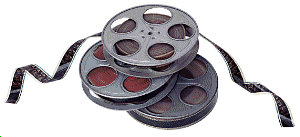

Hum 3: Film Principles
Fr. Rene C. Ocampo, SJ/Bong S. Eliab
Second Semester, 2001-2002
Humanities Division
School of Arts and Sciences
Ateneo de Davao University
Syllabus | Notes | Examinations | Papers | Bulletin Boards | Grades
Mise-en-scene means staging an action.
It is historically to do with directing plays, and became later to do with film to express
how the material in the frame is directed. ...the audience's focus of attention is deliberately shifted by a shift of focus within a shot. The implications of such changes cannot be formulated simply. They are clearly bound up with what Victor Perkins called "the death of mise-en-scene", a remark dependent on a definition of mise-en-scene that would stress the relative invinsibility of the director and of technique, the strict subordination of style to the action. Robin Wood. Hollywood from Vietnam to Reagan. New York: Columbia University Press, 1986. p.34. Continuing this notion, Laura Mulvey says... However self-conscious and ironic Hollywood managed to be, it always restricted itself to a formal mise-en-scene reflecting the dominant ideological concept of the cinema. Laura Mulvey, Visual Pleasure and Narrative Cinema, in Antony Easthope, ed. Contemporary Film Theory. London: Longman, 1993. p.113. Thus, the characters and narrative elements in a mainstream film are overriding the
possibilities it can have in terms of technique and style. Consider the following
questions: Does this apply unilaterally across dominant cinema? Where does this theory not apply? Is the theory, above all, true, that the emphasis lies with action rather than stylistic innovation? Mise-en-scene can also be broken up into small elements... Setting Lighting and colour Space and time You may also want to consider the use of mise-en-scene in documentary. Méliès and the discovery of mise-en-sceneGeorges Méliès, having watched the demonstration by the Lumiere brothers in 1895 of
their short films, made a camera of his own.
|
Syllabus | Notes | Examinations | Papers | Bulletin Boards | Grades
All Rights Reserved 2001
Ateneo de Davao University
15 November 2001